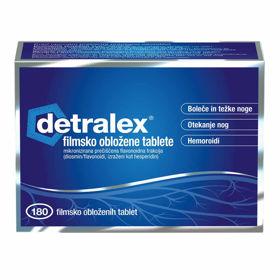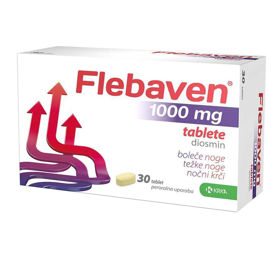Customer question:
My leg is visibly swelling - why does this happen, and how can I help myself?
Pharmacist's response:
If you often have discomfort in your legs but are unsure of the cause, you may be living with a chronic venous insufficiency disease. Chronic venous insufficiency is a relatively common medical condition that affects about 2 out of 5 individuals. Often, the mentioned problem is the cause of swelling of the legs. This condition occurs when the blood valves in the legs' veins are damaged, making it challenging to transport blood from the extremities.
In healthy veins, so-called one-way valves allow blood to move in only one direction - from the legs back to the heart. The venous valves close when you stand or sit, preventing blood from flowing back into your legs.
Over time, however, the valves can leak, and blood begins to flow back into your legs. Among other things, this causes high pressure in the veins of the legs and causes fluid to leak out and accumulate in the legs (effect of gravity). Pigment from the blood collects under the skin over time and causes permanent skin darkening.
Untreated varicose veins cause high pressure in the veins, which worsens over time and further causes painful permanent changes to your skin and body. As a result, you are exposed to an increased risk of skin damage or ulcers, which are very difficult to heal.
The condition of venous insufficiency can worsen due to prolonged standing and sitting, increased consumption of salt and liquid, and above all, increased body weight and obesity. However, the good news is that patients can improve significantly and lead a normal and productive lifestyle if they follow specific tips.
How to get rid of or reduce the symptoms of chronic venous insufficiency?
Wear compression clothing
Wearing compression garments often helps blood pooling in the leg, ankle, or foot to flow in the right direction - towards the heart. Your doctor may prescribe elastic compression stockings or stockings made of flexible, graded fabric. These clothes exert different compression on different parts of the legs and feet, mainly to make the blood move correctly through the veins.
Maintain a healthy weight
Obesity can contribute to the development of blocked or weakened valves (venous valves) in the veins of the legs. Experts can help you develop eating and exercise habits leading to weight loss.
Increase physical activity
Your doctor may recommend that you walk, ride an exercise bike, or run for 30 minutes several times a week. The activity helps improve circulation and tones the leg muscles. This can help pump blood toward the heart. Stretching the thigh muscles can also help improve blood flow.
Reach for medication
The drug Detralex is intended to treat symptoms of chronic venous insufficiency, lymphedema, and acute hemorrhoidal syndrome. Use the medicine, especially in case of symptoms of chronic vein disease.
Put your feet up
Prolonged standing or sitting can contribute to blood pooling in the leg veins. Therefore, when sitting, raise your legs by placing them on the footrest, and do not cross them.
Avoid tight clothing and high heels.
Tight clothing or specific footwear can restrict blood flow in the legs and increase the risk of chronic venous insufficiency. High-heeled shoes can also impede blood flow in the legs. For this reason, your doctor will recommend wearing low-heeled shoes.
Avoid excessive salt consumption.
Too much table salt or sodium chloride causes the body to retain water excessively. As a result, excess fluid in the legs can cause swelling and pressure on the leg veins, weakening the vein walls and causing chronic venous insufficiency.
Moisturize your skin
Although it won't cure chronic venous insufficiency, daily application of moisturizer can heal dry or cracked skin and improve the health of your legs.
Interesting reading: Lymph stagnation in the legs
Interesting reading: Hemorrhoids Forum











